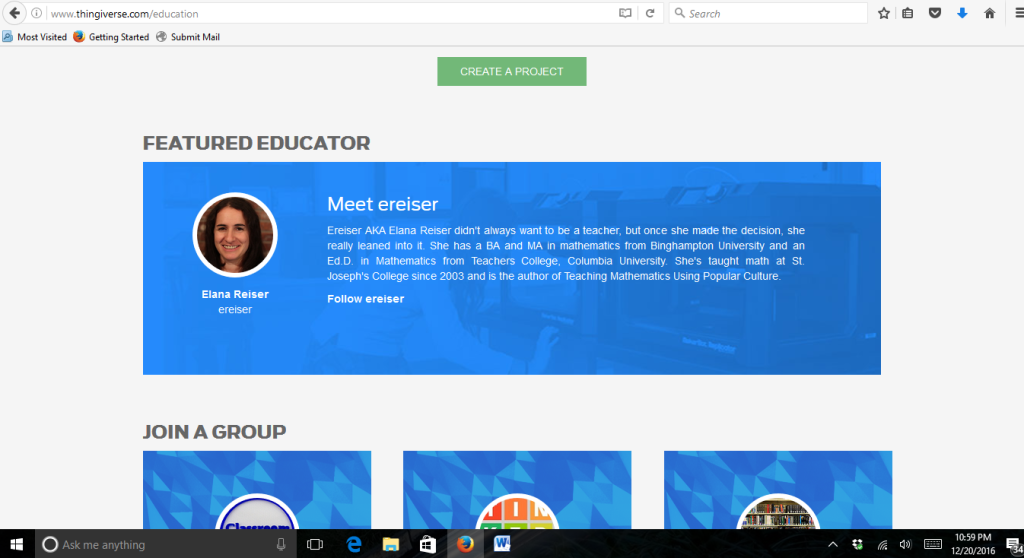This book is intended for teachers who have little to no experience with 3D printing. I’d like to start by telling you a little bit about my journey into 3D printing; how I went from having no experience to writing this book. As with most people, I became aware of 3D printing when it first became popular a few years back. I saw some 3D printed objects around. I watched the episode of Grey’s Anatomy where they 3D printed a vain. Basically, 3D printing was in my periphery but I didn’t know much about it. I am the director for a master’s program in mathematics education for secondary teachers and one of the courses I help teach is on using technology in the mathematics classroom. I was planning for this course one year and decided it would be really great if I could teach a class on how to incorporate 3D printing into the math classroom. The only problem was, I had no idea how to do that myself. I tried looking around the internet but couldn’t really find any sources for complete beginners. My main problem was that I had no idea how to get started. For instance, if I had known the name of a good design program I could have easily found tutorials. If any of you are in this same situation than this is the perfect book for you! After searching around I finally came to a page from MakerBot advertising a make-a-thon (kind of like a workshop where you make things) that focused on developing STEAM (science, technology, engineering, art, and math) activities. There was a small fee that went to charity and there was one not too far. It was kismet! At this make-a-thon I was able to get that basic introduction that I needed and could not find on my own. I learned about many different design programs, I worked in a group (shout out to the 3Dears) to create a lesson that involved 3D printing (we created a mathematical rollercoaster as seen in Chapter 5), and I saw how I would be able to share this with my students. I actually had perfect timing because it turns out MakerBot was getting a lot of questions from teachers on how to incorporate 3D printing into their classroom and they decided to make something happen to give teachers that information. As a result of attending this make-a-thon I joined their educator program (https://www.makerbot.com/educators/). Through this program I developed twelve lesson plans. Others also developed lessons and now you can view them all on http://www.thingiverse.com/education. It was through this process of creating my lessons that I got a lot of experience 3D printing and using some of the design programs. This was such a transformative experience that I decided to write this book to help others who were in a similar situation as me and needed a little help getting started.
Just in case you’re wondering about my qualifications, I have a BA and MA in mathematics from Binghamton University and an Ed. D. in mathematics education from Teachers College, Columbia University. For the past 14 years I have been teaching mathematics and mathematics education courses at St. Joseph’s College. My main area of research has been focused on mathematics education. I have written a book on incorporating movies and television shows into the high school mathematics classroom as well as articles and presentations (http://www.popculturemath.com/additional-resources/). I founded a master’s program for mathematics education at my college and have served as its director since its inception 6 years ago. Students in this program are all secondary mathematics teachers. Basically, I dedicate my professional life to finding ways to help students of all ages learn and enjoy mathematics. As a MakerBot educator I provide feedback to MakerBot about how they can best help teachers use 3D printing in their classrooms. As of the writing of this book I am currently the featured educator on the Thingiverse Education website. I was also featured in a blog post written by MakerBot and I have presented on this topic at the Long Island Mathematics Conference (LIMACON). I hope that through reading this book you will get all of your questions answered about how to get started using 3D printing in your mathematics classroom.

